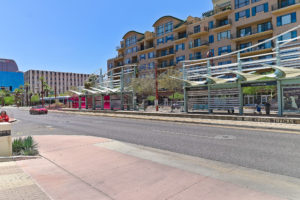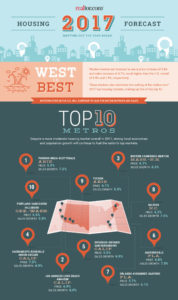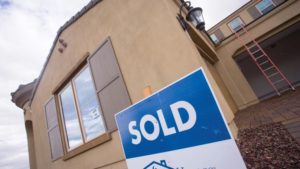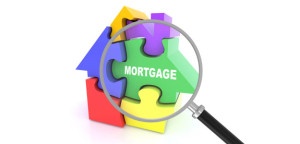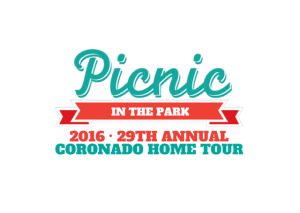If you’re one the fence about buying a home in Phoenix, it’s time to get off. It’s been a long, hard road to recovery for metro Phoenix’s boom-and-bust-battered housing market, but it’s back, and then some.
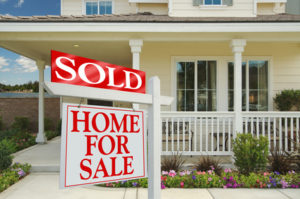 But some Valley neighborhoods are there, back to 2006 price levels, and higher and other neighborhoods are very close.
But some Valley neighborhoods are there, back to 2006 price levels, and higher and other neighborhoods are very close.
As expected, millennial first-time homebuyers are propelling the recovery.
Metro Phoenix home prices are rising the fastest in many of its most affordable, centrally located neighborhoods, from downtown Phoenix to central Mesa, where young buyers want to live and can afford houses.
2017 was a good year for the housing recovery in the Phoenix area. Almost one-third of the Valley’s ZIP codes posted double-digit-percentage increases in prices last year, according to The Arizona Republic/azcentral Street Scout Home Values report.
Street Scout is azcentral’s neighborhood and housing site that provides property valuations, home sales data, real estate news and listings.
Street Scout exists to make our community stronger, more informed and more connected. We’re a news organization with deep roots here, but we’re also a modern media company that’s pushing the boundaries of what we think about when we say “content.” Stunning real estate photography, comprehensive neighborhood guides, accurate, timely data and expert analysis provide you with what you need to find the best place to call home.
But there is concern buyer demand for affordable homes is beginning to outpace the supply. And there’s always worry in Arizona about the possibility of another housing bust when prices climb for a few years.
Phoenix, AZ Recession Rebound
In nearly 30 Phoenix-area neighborhoods, prices have rebounded to 2006 levels or even higher, data from The Information Market shows.
Most of those areas still have median home prices below $300,000.
“Last year was a strong one for the Valley’s housing market, particularly the more affordable neighborhoods closer in,” said Tina Tamboer, senior housing analyst with the Cromford Report. “Only 2004, ’05 and 2011 were better years for home sales, and those weren’t normal years.”
The housing boom inflated home prices and sales between 2004 and 2006, and then investors drove up sales as foreclosures climbed and prices plummeted from 2010 to 2012.
Home prices have doubled in many Phoenix-area neighborhoods since the bottom of the market. Besides the 30 ZIP codes where home prices have bounced back from the crash, values in another 40 neighborhoods are within 10 percent of recovering.
Fastest-growing home prices In the Phoenix Metro Area
Aysia Williams and Benjamin Hughes rented in downtown Phoenix’s historic Woodland historic district for about a year before deciding to buy their first home.
“We fell in love with the area, but saw prices and rents climbing fast,” Williams said. “We knew we wanted to buy, but there was a lot of competition for the houses we liked.”
Woodland is part of the 85007 ZIP code,one of central Phoenix’s more affordable neighborhoods. The area, which has also attracted many investors, saw its overall median home price climb 10 percent to more than $192,000 in 2017. Sales in the area jumped nearly 20 percent last year.
Home prices in their neighborhood on the western side of downtown have rebounded from the crash and are almost 2 percent higher than they were in 2006.
Aysia and Benjamin were so lucky and bought from their wonderful neighbor, who didn’t want to sell to an investor.
The couple’s house, for which they paid less than $250,000 a few months ago, wasn’t even listed for sale.
People talk about the gentrification of central Phoenix pricing too many first-time buyers out. But more high-end home sales in the area help other more affordable areas like Woodland and Coronado Historic District improve, too.
Buying a house in the hot 85007 neighborhood of Phoenix included graffiti art in the backyard of Ben Hughes and Aysia Williams’s home.
‘First-time homebuyer market is exploding in Phoenix, AZ’
Stephanie Silva and Billy Horner moved to Chandler, AZ, from Chicago for the warmth last March.
“We wanted to rent first to see if we liked the area and a ‘shovel-free life,’ ” said Silva, who works in Tempe. Horner works in downtown Chandler.
The couple recently bought a home for under $275,000 in the central Mesa, AZ ZIP 85210, almost halfway between their jobs. Prices in the still-affordable neighborhood climbed 9 percent, and sales rose 38 percent last year.
Home values just rebounded back to 2006 levels in their neighborhood, where the median price is about $215,000.
“We are on a quiet, cozy block in a home with a pool and a yard,” Silva said. “So far, it is everything these Midwest transplants could ask for.”
The couple’s real-estate agents said if more people don’t decide to sell in the popular, affordable neighborhoods closer in, then it will soon get even tougher for first-time buyers.
“The first-time homebuyer market is exploding. So many people are done with renting and dealing with landlords,” Matthew Coates said. “But we are seeing a deficit of homes available.”
The number of Valley homes for sale priced under $350,000 is down almost 20 percent from last year, according to the Cromford Report.
Some potential buyers are giving up
Nils and Heather Hofmann began looking for a home midway between their jobs in Deer Valley and Chandler more than a year ago. Their budget was $300,000.
The couple, who was renting in north-central Phoenix, put their home search on hold last fall after seeing dozens of houses. The ones they liked usually sold before they could get an offer in.
“I think we must have seen more than 80 houses,” Heather Hofmann said. “We wanted to buy where we were renting, but prices were too high.”
The couple decided to stop looking for a while late last summer because it became too frustrating. But then they found out Heather was pregnant, resumed their search and upped their price to $400,000.
The Hofmanns bought a home last month in north Phoenix’s Desert Ridge neighborhood, close to several freeways for their commute.
The median home price in the Desert Ridge area is about $485,000, up 5 percent from 2016.”
Looking farther outside of Phoenix Proper for Real Estate to Buy
The metro Phoenix suburbs farthest out were hardest hit by the crash and have been the slowest to recover.
But both sales and prices are again climbing in those areas, including the West Valley suburbs of Goodyear, Surprise and Buckeye and southeast Valley areas of Queen Creek and Maricopa.
The median home price in the Buckeye ZIP code 85326 is up almost 10 percent from last year to $192,000. But the area’s home values are still about 19 percent off the 2006 peak.
Will 2018 be the year for Phoenix?
Metro Phoenix home prices continue to climb in most neighborhoods.
The median Valley home price is now about $253,000, up from $235,000 a year ago.
Some homeowners and national market watchers see price increases in the Valley and are concerned about another bubble.
“The housing market is very solid now. But there’s nothing that shows we are heading for another crash.
Metro Phoenix’s December 2017 median price of $250,000 is still below the high of $260,000 from 2006.
Housing market watchers say 2018 could be better than 2017 for prices and sales.
Whether this is the year the area’s median market reaches that 2006 level depends on whether first-time buyers can find homes they can afford.
“Either low inventory numbers for homes for sale will restrict sales because buyers can’t find houses in their price range or Millennials, the driving force behind our market, will be able to and decide to buy,” said Tom Ruff, housing analyst with The Information Market, owned by the Arizona Regional Multiple Listing Service.
“That, coupled with an improving economy, will lead to increased sales in 2018,” he said.
Whether you’re buying or selling a home in Central or Downtown Phoenix, or just have some questions about anything at all in or about any one of the historic districts in Phoenix, I’d be very happy to help you! Just call or email me anytime.
 The analysis, released Thursday, highlights the 10 markets poised for growth in the coming year. Phoenix ranks No. 7 on the list, just behind Fresno, California and ahead of Columbia, South Carolina. Colorado Springs, Colorado topped the rankings.
The analysis, released Thursday, highlights the 10 markets poised for growth in the coming year. Phoenix ranks No. 7 on the list, just behind Fresno, California and ahead of Columbia, South Carolina. Colorado Springs, Colorado topped the rankings.

